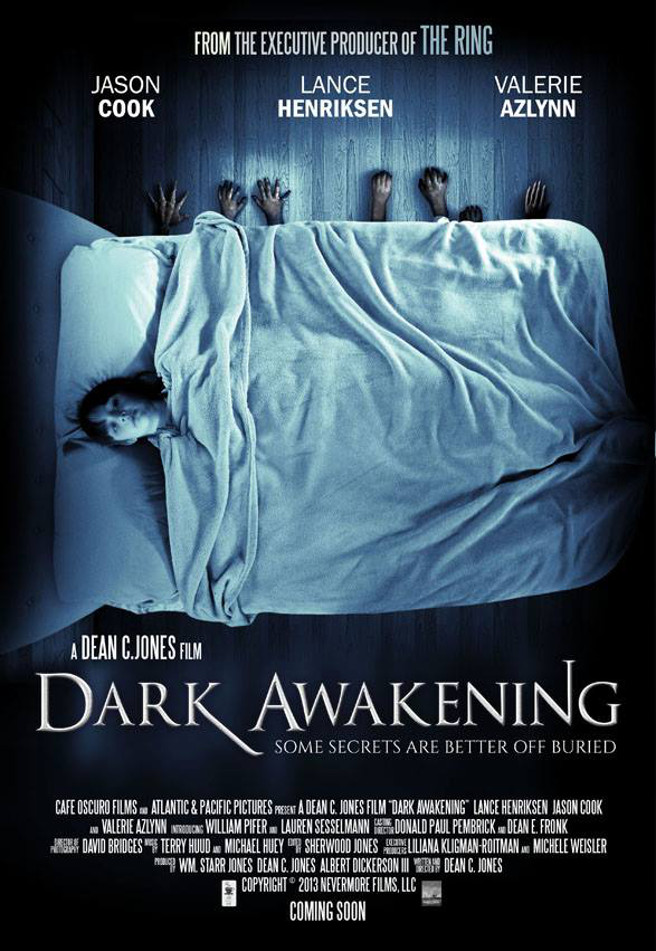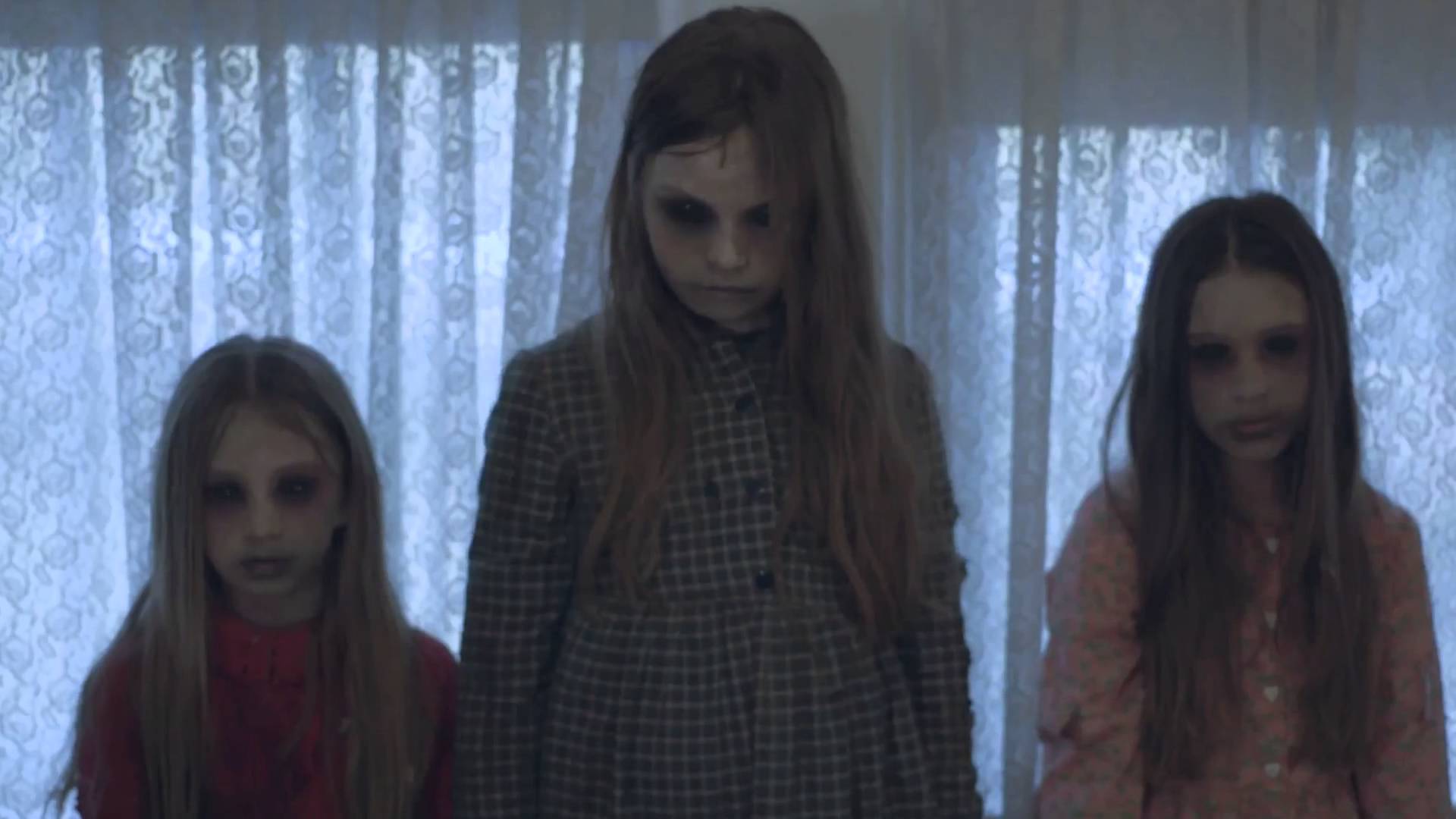Terry Huud & Michael Huey – interviewed by Randall D. Larson
DARK AWAKENING is an intriguing independent 2014 horror film about a young couple who move into a family estate in a distant country town in an attempt to sell the home, and soon begin noticing strangeness among the local elderly townsfolk and confronted by the apparent spirits of dead children. As their appearances become more abrupt and begin to affect the couple’s young boy, a revelation explains the haunting and draws the couple into a dangerous encounter. Featuring excellent performances from Valerie Azlyn and Jason Cook as the couple, featuring a superb performance from Lance Henriksen as the local priest who seems to know too much, and a strikingly natural and nuanced performance from William Pifer as the young boy, the film overcomes its low budget with effective performances, some good, honest scares, and a capable touch from writer-director Dean C. Jones, a former make-up specialist here making his sophomore feature.
Supporting the film’s creepy atmosphere and emotive strength is this lyrical and haunting score by Terry Michael Huud, a veteran of independent horror scoring since the 1990s (CHILDREN OF THE CORN 666: ISAAC’S RETURN, and several horror features for writer/director Donald F. Glut) and newcomer Michael Huey . Both composers scored Jones’s debut feature (COFFIN BABY) in 2013 and were his first choice in scoring his second movie. “We needed a score to propel and support the story,” wrote Jones about the music. “We also wanted an ‘Americana’ feel to compliment the incredible photography by our cinematographer David Bridges which captures the beautiful panoramic landscapes of our North Carolina locations.” Jones also felt the music needed to communicate a nostalgic feel for his ghost story, due to its primary setting being the family house and with the family history that’s woven through the storyline.
The score is lyrically fragile and sensitive in its support of the family and what they begin to go through in the strange house, while gradually increasing and ultimately amp-ing up the scare factor once the haunting becomes evident and gathers momentum, from the mysterious cellar door that won’t stay locked to the sudden appearances of young ghostly figures and unraveling memories. The film’s budget required primarily a digital orchestra enhanced by a real violinist, and the score maintains a very authentic orchestral sound as well as making the most of clearly synthetic sound design to keep the creep-factor unsettling and forceful.
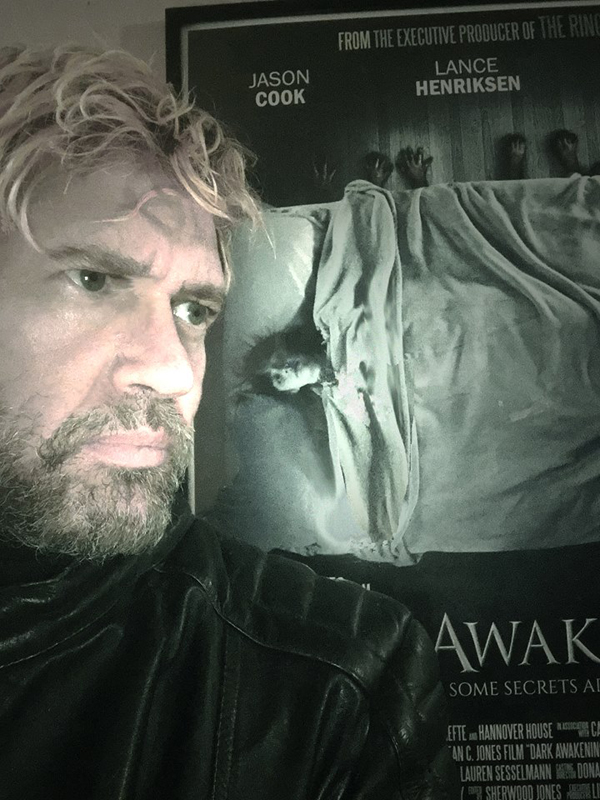
“For winds and brass I used Wallander Instruments because of their expressive quality,” said Huey of the digital sample program he used to create his symphonic palate for DARK AWAKENING. “Strings were a combination of different libraries, but mainly LA Scoring Strings. Alicia’s Keys has been my go-to piano for many years now – it’s a beautifully recorded instrument with a lot of depth and life to it.” In addition to the sampled instruments, the composers also brought in violinist Hannes Frischat to perform on two cues, lending an authentically organic feel to the violin solos. “He did a marvelous job!” added Huey.
“It is very difficult to get certain phrases and articulations down with even today’s sample material so Hannes saved the day,” added Huud. “I also agree with Michael, Alicia’s Keys is the bees knees for piano!”
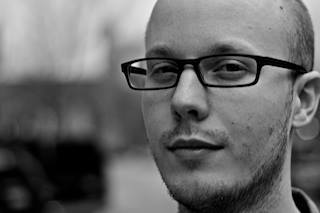
“The process of collaborating together on the score was very smooth,” Huey explained. “We divided it up so that I took care of the thematic through-line and Terry focused more on the horror aspects. There was a little overlap here and there, but for the most part we worked in isolation. I would write a cue, send it (with picture) to Terry who might have a suggestion or two, and then he’d send it to Dean (the director) for approval. At the beginning of the process I spent a few days coming up with the main thematic material and motifs. An early version of the main theme reflected more of the ghostly aspects of the picture – it was very subdued, moody, and minimal. Terry and I both thought that, while serviceable, it might be better to approach it from a more emotional angle. So I went back to the drawing board and came up with a very traditional, long-lined theme. There’s a sadness and melancholy to it – a sort of counterpoint to the horrific and mysterious situations our characters find themselves in. It was refreshing to be allowed to take a more thoughtful and melodic approach to the score as a whole.”
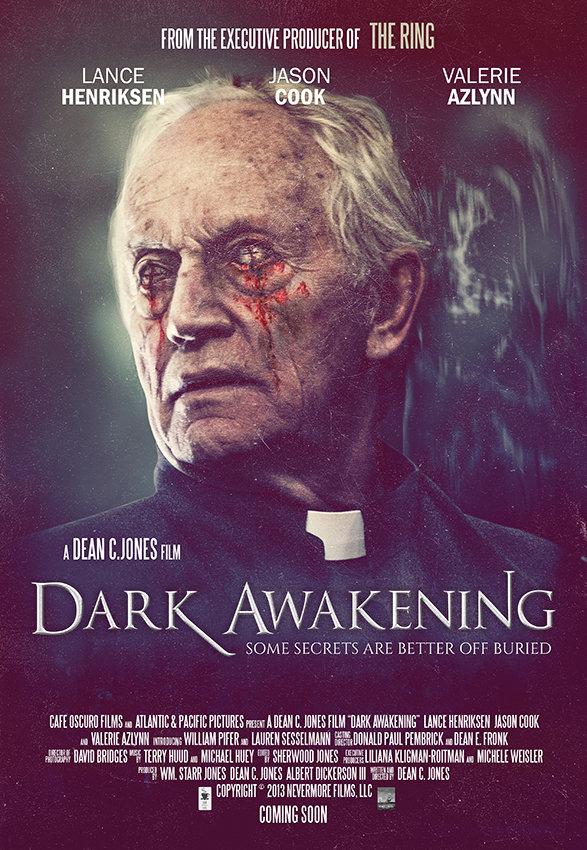 Huud’s experience with prior low-budget horror scoring gave him an edge with the spooky/scary music, as did his articulation with the genre’s musical history. “Charles Bernstein was a huge influence for me growing up and I still remember a certain guitar riff from THE ENTITY that I really liked,” he said. “I wanted something like that but more subtle that would keep bringing the viewer back to the ghosts, so I focused on this repeating low end “Spook Loop” that could be used to foreshadow the ghosts or during a ghost scene.”
Huud’s experience with prior low-budget horror scoring gave him an edge with the spooky/scary music, as did his articulation with the genre’s musical history. “Charles Bernstein was a huge influence for me growing up and I still remember a certain guitar riff from THE ENTITY that I really liked,” he said. “I wanted something like that but more subtle that would keep bringing the viewer back to the ghosts, so I focused on this repeating low end “Spook Loop” that could be used to foreshadow the ghosts or during a ghost scene.”
Being able to work on a film score that included both mayhem and melody in its musical arc was a pleasure for both composers. “In these modern times of many filmmakers squashing any thematic elements,” Huud concluded, “I have to agree with Michael, it was quite refreshing working with a director who was for thematic development and not afraid of it.”
For more information on the composers, see:
- Michael Huey: http://officialmichaelhuey.com/
- Terry Michael Huud: http://www.music4themovies.com/
- For information on purchasing a promo soundtrack to DARK AWAKENING, contact Terry Huud.

